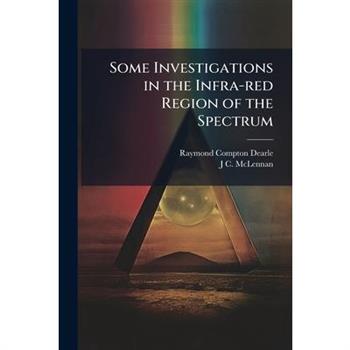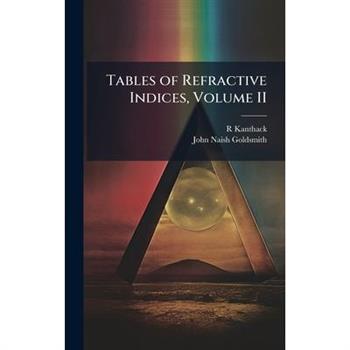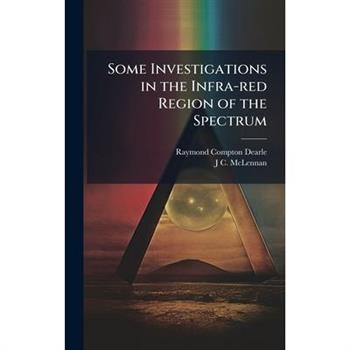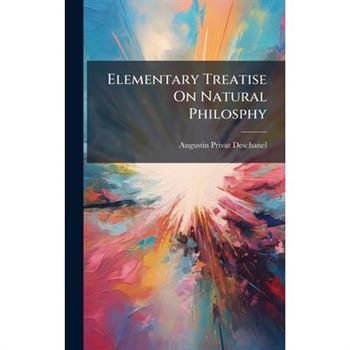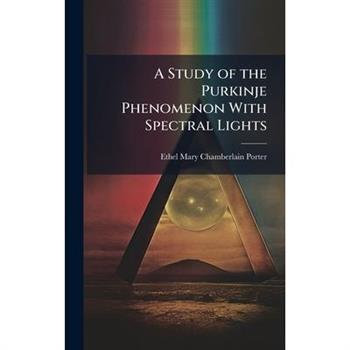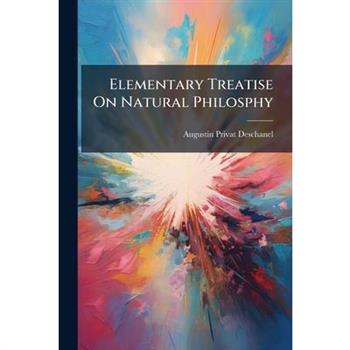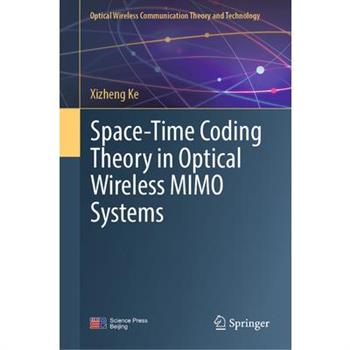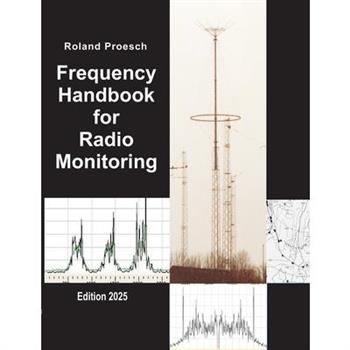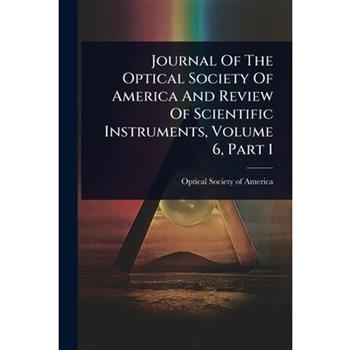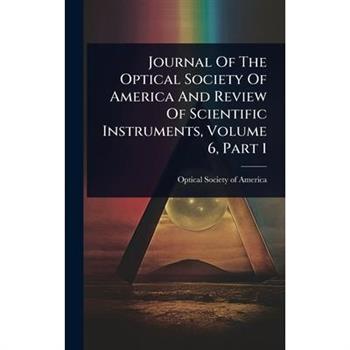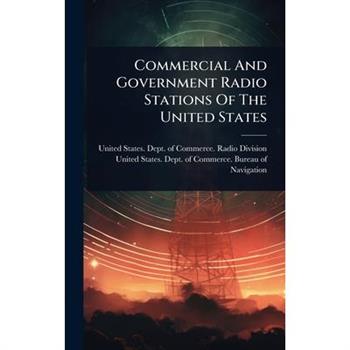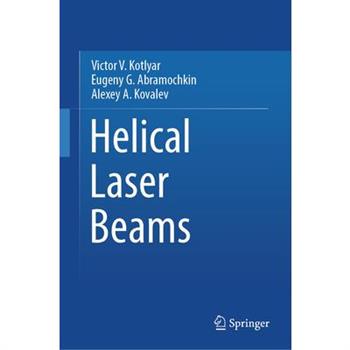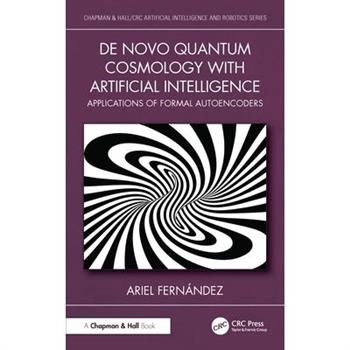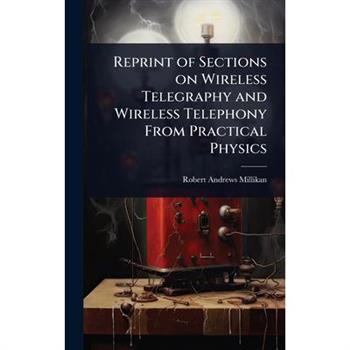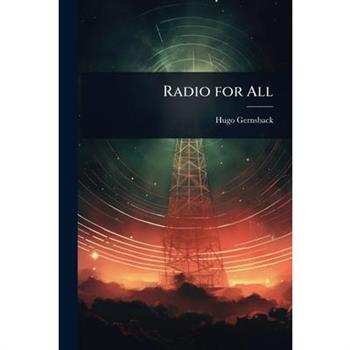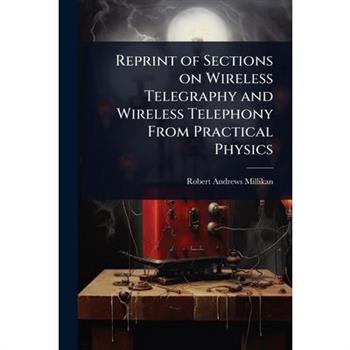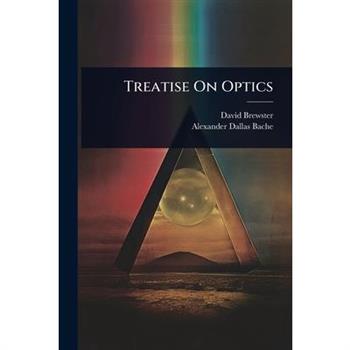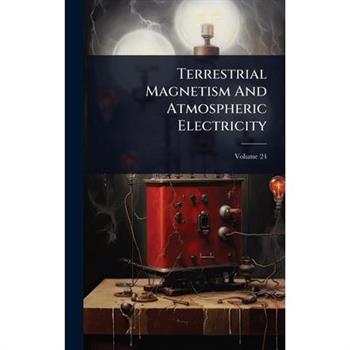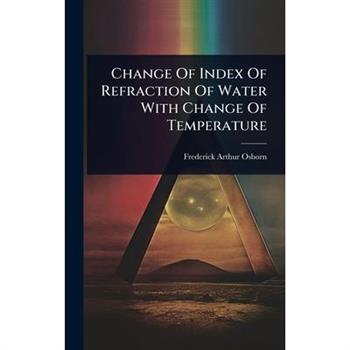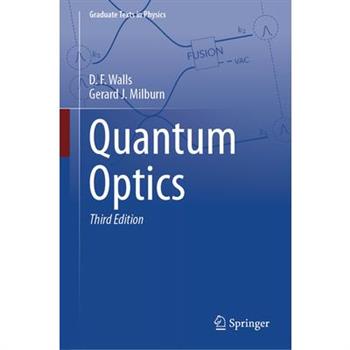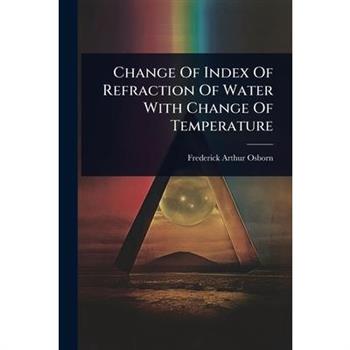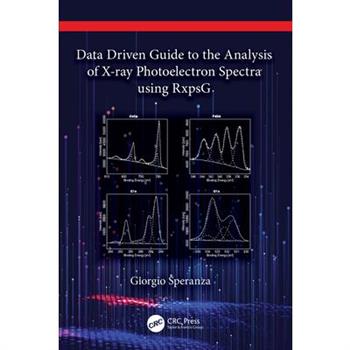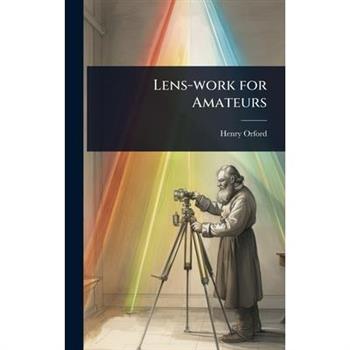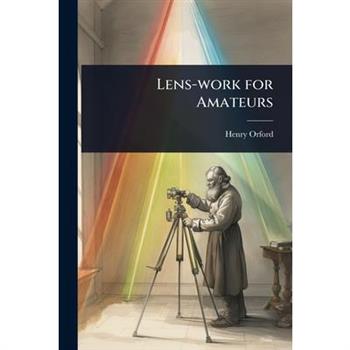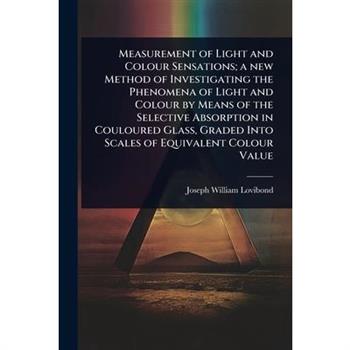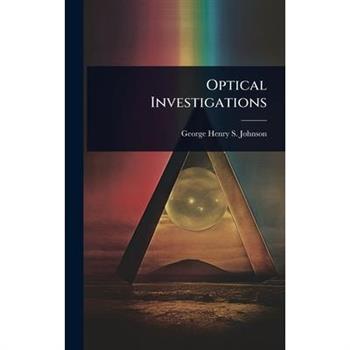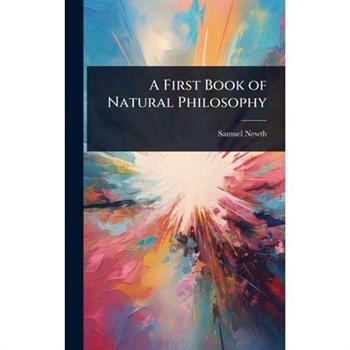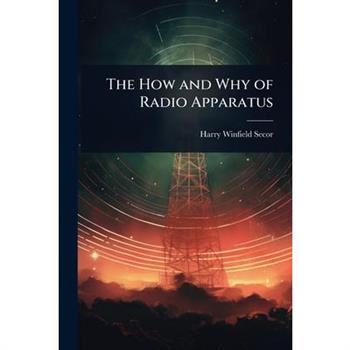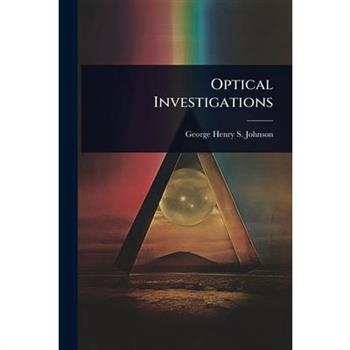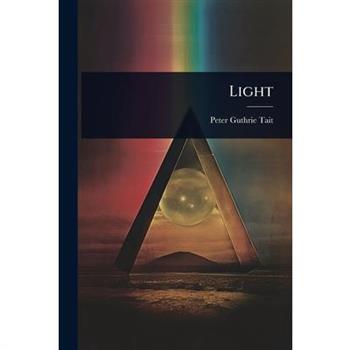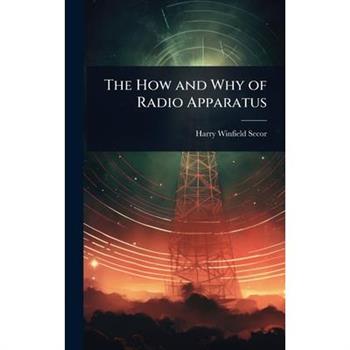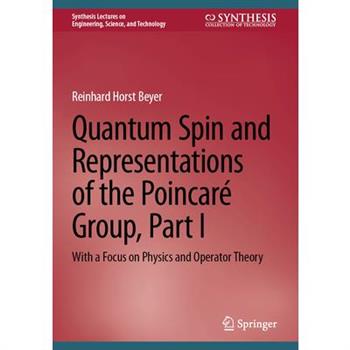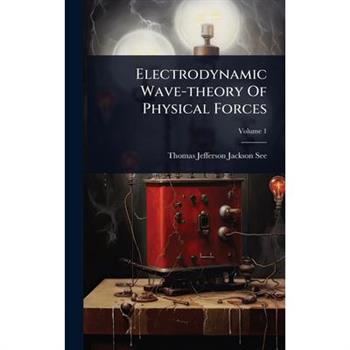Tables of Refractive Indices, Volume II
"Tables of Refractive Indices, Volume II: Oils, Fats and Waxes" presents a compilation of refractive index data for various oils, fats, and waxes. This volume serves as a valuable reference for scientists, engineers, and researchers working in fields such as chemistry, physics, and materials science. Compiled by R. Kanthack and John Naish Goldsmith, the tables provide precise measurements essential for identifying, characterizing, and analyzing these substances. Refractive index is a fundamental property used in a wide array of applications, including optical design, quality control, and chemical analysis. This book offers a comprehensive resource for accurate and reliable data in this specialized area.This work has been selected by scholars as being culturally important, and is part of the knowledge base of civilization as we know it. This work was reproduced from the original artifact, and remains as true to the original work as possible. Therefore, you will see the original copyright references, library stamps (as most of these works have been housed in our most important libraries around the world), and other notations in the work.This work is in the public domain in the United States of America, and possibly other nations. Within the United States, you may freely copy and distribute this work, as no entity (individual or corporate) has a copyright on the body of the work.As a reproduction of a historical artifact, this work may contain missing or blurred pages, poor pictures, errant marks, etc. Scholars believe, and we concur, that this work is important enough to be preserved, reproduced, and made generally available to the public. We appreciate your support of the preservation process, and thank you for being an important part of keeping this knowledge alive and relevant.
Some Investigations in the Infra-red Region of the Spectrum
"Some Investigations in the Infra-red Region of the Spectrum" presents detailed scientific explorations into the properties and behavior of infrared light. Authored by Raymond Compton Dearle and J.C. McLennan, this work delves into the methodologies and findings of spectroscopic analysis, offering insights into the nature of electromagnetic radiation beyond the visible spectrum. The book explores various experimental setups and analytical techniques used to study infrared phenomena. This book is a valuable resource for physicists, spectroscopists, and students interested in the fundamental principles underlying infrared technology and its applications. It offers a historical perspective on the development of spectroscopic methods and their impact on scientific understanding.This work has been selected by scholars as being culturally important, and is part of the knowledge base of civilization as we know it. This work was reproduced from the original artifact, and remains as true to the original work as possible. Therefore, you will see the original copyright references, library stamps (as most of these works have been housed in our most important libraries around the world), and other notations in the work.This work is in the public domain in the United States of America, and possibly other nations. Within the United States, you may freely copy and distribute this work, as no entity (individual or corporate) has a copyright on the body of the work.As a reproduction of a historical artifact, this work may contain missing or blurred pages, poor pictures, errant marks, etc. Scholars believe, and we concur, that this work is important enough to be preserved, reproduced, and made generally available to the public. We appreciate your support of the preservation process, and thank you for being an important part of keeping this knowledge alive and relevant.
Tables of Refractive Indices, Volume II
"Tables of Refractive Indices, Volume II: Oils, Fats and Waxes" presents a compilation of refractive index data for various oils, fats, and waxes. This volume serves as a valuable reference for scientists, engineers, and researchers working in fields such as chemistry, physics, and materials science. Compiled by R. Kanthack and John Naish Goldsmith, the tables provide precise measurements essential for identifying, characterizing, and analyzing these substances. Refractive index is a fundamental property used in a wide array of applications, including optical design, quality control, and chemical analysis. This book offers a comprehensive resource for accurate and reliable data in this specialized area.This work has been selected by scholars as being culturally important, and is part of the knowledge base of civilization as we know it. This work was reproduced from the original artifact, and remains as true to the original work as possible. Therefore, you will see the original copyright references, library stamps (as most of these works have been housed in our most important libraries around the world), and other notations in the work.This work is in the public domain in the United States of America, and possibly other nations. Within the United States, you may freely copy and distribute this work, as no entity (individual or corporate) has a copyright on the body of the work.As a reproduction of a historical artifact, this work may contain missing or blurred pages, poor pictures, errant marks, etc. Scholars believe, and we concur, that this work is important enough to be preserved, reproduced, and made generally available to the public. We appreciate your support of the preservation process, and thank you for being an important part of keeping this knowledge alive and relevant.
Some Investigations in the Infra-red Region of the Spectrum
"Some Investigations in the Infra-red Region of the Spectrum" presents detailed scientific explorations into the properties and behavior of infrared light. Authored by Raymond Compton Dearle and J.C. McLennan, this work delves into the methodologies and findings of spectroscopic analysis, offering insights into the nature of electromagnetic radiation beyond the visible spectrum. The book explores various experimental setups and analytical techniques used to study infrared phenomena. This book is a valuable resource for physicists, spectroscopists, and students interested in the fundamental principles underlying infrared technology and its applications. It offers a historical perspective on the development of spectroscopic methods and their impact on scientific understanding.This work has been selected by scholars as being culturally important, and is part of the knowledge base of civilization as we know it. This work was reproduced from the original artifact, and remains as true to the original work as possible. Therefore, you will see the original copyright references, library stamps (as most of these works have been housed in our most important libraries around the world), and other notations in the work.This work is in the public domain in the United States of America, and possibly other nations. Within the United States, you may freely copy and distribute this work, as no entity (individual or corporate) has a copyright on the body of the work.As a reproduction of a historical artifact, this work may contain missing or blurred pages, poor pictures, errant marks, etc. Scholars believe, and we concur, that this work is important enough to be preserved, reproduced, and made generally available to the public. We appreciate your support of the preservation process, and thank you for being an important part of keeping this knowledge alive and relevant.
Elementary Treatise On Natural Philosphy
"Elementary Treatise on Natural Philosophy: Sound and Light" presents a detailed exploration of the principles governing acoustics, sound, and optics. Written by Augustin Privat-Deschanel, this volume offers a comprehensive examination of these fundamental aspects of physics. Readers will find a thorough treatment of topics such as wave mechanics, the properties of light, and the nature of sound propagation. The text provides clear explanations and insightful analysis, making it an invaluable resource for students and enthusiasts seeking a deeper understanding of the physical world. This edition preserves the original insights and detailed explanations, offering a valuable resource for those interested in the historical development of physics and the fundamental principles that govern our understanding of sound and light.This work has been selected by scholars as being culturally important, and is part of the knowledge base of civilization as we know it. This work was reproduced from the original artifact, and remains as true to the original work as possible. Therefore, you will see the original copyright references, library stamps (as most of these works have been housed in our most important libraries around the world), and other notations in the work.This work is in the public domain in the United States of America, and possibly other nations. Within the United States, you may freely copy and distribute this work, as no entity (individual or corporate) has a copyright on the body of the work.As a reproduction of a historical artifact, this work may contain missing or blurred pages, poor pictures, errant marks, etc. Scholars believe, and we concur, that this work is important enough to be preserved, reproduced, and made generally available to the public. We appreciate your support of the preservation process, and thank you for being an important part of keeping this knowledge alive and relevant.
A Study of the Purkinje Phenomenon With Spectral Lights
"A Study of the Purkinje Phenomenon With Spectral Lights" (1911) by Ethel Mary Chamberlain Porter presents a detailed investigation into the Purkinje effect, a phenomenon of human vision. The work explores how the perceived brightness of different colors changes with varying levels of illumination. Focusing on spectral lights, the study meticulously examines the shifting sensitivities of the eye under diverse lighting conditions. Porter's research provides valuable insights into the complexities of color vision and the adaptive mechanisms of the human eye. This study is a crucial resource for those interested in the history of optics, perceptual psychology, and the scientific understanding of visual phenomena.This work has been selected by scholars as being culturally important, and is part of the knowledge base of civilization as we know it. This work was reproduced from the original artifact, and remains as true to the original work as possible. Therefore, you will see the original copyright references, library stamps (as most of these works have been housed in our most important libraries around the world), and other notations in the work.This work is in the public domain in the United States of America, and possibly other nations. Within the United States, you may freely copy and distribute this work, as no entity (individual or corporate) has a copyright on the body of the work.As a reproduction of a historical artifact, this work may contain missing or blurred pages, poor pictures, errant marks, etc. Scholars believe, and we concur, that this work is important enough to be preserved, reproduced, and made generally available to the public. We appreciate your support of the preservation process, and thank you for being an important part of keeping this knowledge alive and relevant.
A Study of the Purkinje Phenomenon With Spectral Lights
"A Study of the Purkinje Phenomenon With Spectral Lights" (1911) by Ethel Mary Chamberlain Porter presents a detailed investigation into the Purkinje effect, a phenomenon of human vision. The work explores how the perceived brightness of different colors changes with varying levels of illumination. Focusing on spectral lights, the study meticulously examines the shifting sensitivities of the eye under diverse lighting conditions. Porter's research provides valuable insights into the complexities of color vision and the adaptive mechanisms of the human eye. This study is a crucial resource for those interested in the history of optics, perceptual psychology, and the scientific understanding of visual phenomena.This work has been selected by scholars as being culturally important, and is part of the knowledge base of civilization as we know it. This work was reproduced from the original artifact, and remains as true to the original work as possible. Therefore, you will see the original copyright references, library stamps (as most of these works have been housed in our most important libraries around the world), and other notations in the work.This work is in the public domain in the United States of America, and possibly other nations. Within the United States, you may freely copy and distribute this work, as no entity (individual or corporate) has a copyright on the body of the work.As a reproduction of a historical artifact, this work may contain missing or blurred pages, poor pictures, errant marks, etc. Scholars believe, and we concur, that this work is important enough to be preserved, reproduced, and made generally available to the public. We appreciate your support of the preservation process, and thank you for being an important part of keeping this knowledge alive and relevant.
Letters of a Radio-Engineer to His Son
"Letters of a Radio-Engineer to His Son" offers a fascinating glimpse into the world of early radio technology and electrical engineering through a series of letters. Written as an educational tool, the book conveys complex concepts in an accessible manner, mirroring a father's guidance to his son. It covers the principles of electromagnetism, the workings of radio devices, and the practical applications of electrical engineering during the early 20th century. This volume serves not only as a historical record of technological advancements but also as a testament to the enduring methods of technical education. Readers interested in the history of radio, electrical engineering, or early 20th-century technology will find this collection both informative and engaging.This work has been selected by scholars as being culturally important, and is part of the knowledge base of civilization as we know it. This work was reproduced from the original artifact, and remains as true to the original work as possible. Therefore, you will see the original copyright references, library stamps (as most of these works have been housed in our most important libraries around the world), and other notations in the work.This work is in the public domain in the United States of America, and possibly other nations. Within the United States, you may freely copy and distribute this work, as no entity (individual or corporate) has a copyright on the body of the work.As a reproduction of a historical artifact, this work may contain missing or blurred pages, poor pictures, errant marks, etc. Scholars believe, and we concur, that this work is important enough to be preserved, reproduced, and made generally available to the public. We appreciate your support of the preservation process, and thank you for being an important part of keeping this knowledge alive and relevant.
Elementary Treatise On Natural Philosphy
"Elementary Treatise on Natural Philosophy: Sound and Light" presents a detailed exploration of the principles governing acoustics, sound, and optics. Written by Augustin Privat-Deschanel, this volume offers a comprehensive examination of these fundamental aspects of physics. Readers will find a thorough treatment of topics such as wave mechanics, the properties of light, and the nature of sound propagation. The text provides clear explanations and insightful analysis, making it an invaluable resource for students and enthusiasts seeking a deeper understanding of the physical world. This edition preserves the original insights and detailed explanations, offering a valuable resource for those interested in the historical development of physics and the fundamental principles that govern our understanding of sound and light.This work has been selected by scholars as being culturally important, and is part of the knowledge base of civilization as we know it. This work was reproduced from the original artifact, and remains as true to the original work as possible. Therefore, you will see the original copyright references, library stamps (as most of these works have been housed in our most important libraries around the world), and other notations in the work.This work is in the public domain in the United States of America, and possibly other nations. Within the United States, you may freely copy and distribute this work, as no entity (individual or corporate) has a copyright on the body of the work.As a reproduction of a historical artifact, this work may contain missing or blurred pages, poor pictures, errant marks, etc. Scholars believe, and we concur, that this work is important enough to be preserved, reproduced, and made generally available to the public. We appreciate your support of the preservation process, and thank you for being an important part of keeping this knowledge alive and relevant.
Frequency Handbook for Radio Monitoring
This book shall help shortwave listener to identify stations on shortwave. It contains more than 18000 frequencies from 82 Hz to 30000 kHz.
Journal Of The Optical Society Of America And Review Of Scientific Instruments, Volume 6, Part 1
This volume, "Journal Of The Optical Society Of America And Review Of Scientific Instruments, Volume 6, Part 1," presents a compilation of research and advancements in the field of optics and scientific instrumentation. Published by the Optical Society of America, this journal offers insights into the theoretical and practical aspects of optical science. It covers a range of topics related to light, vision, and associated technologies. Researchers, scientists, and engineers will find valuable information on the development, application, and review of scientific instruments. This historical record serves as a vital resource for understanding the evolution of optical science and its impact on various technological advancements. It remains relevant for those studying the history of science, optical physics, and instrument design.This work has been selected by scholars as being culturally important, and is part of the knowledge base of civilization as we know it. This work was reproduced from the original artifact, and remains as true to the original work as possible. Therefore, you will see the original copyright references, library stamps (as most of these works have been housed in our most important libraries around the world), and other notations in the work.This work is in the public domain in the United States of America, and possibly other nations. Within the United States, you may freely copy and distribute this work, as no entity (individual or corporate) has a copyright on the body of the work.As a reproduction of a historical artifact, this work may contain missing or blurred pages, poor pictures, errant marks, etc. Scholars believe, and we concur, that this work is important enough to be preserved, reproduced, and made generally available to the public. We appreciate your support of the preservation process, and thank you for being an important part of keeping this knowledge alive and relevant.
Journal Of The Optical Society Of America And Review Of Scientific Instruments, Volume 6, Part 1
This volume, "Journal Of The Optical Society Of America And Review Of Scientific Instruments, Volume 6, Part 1," presents a compilation of research and advancements in the field of optics and scientific instrumentation. Published by the Optical Society of America, this journal offers insights into the theoretical and practical aspects of optical science. It covers a range of topics related to light, vision, and associated technologies. Researchers, scientists, and engineers will find valuable information on the development, application, and review of scientific instruments. This historical record serves as a vital resource for understanding the evolution of optical science and its impact on various technological advancements. It remains relevant for those studying the history of science, optical physics, and instrument design.This work has been selected by scholars as being culturally important, and is part of the knowledge base of civilization as we know it. This work was reproduced from the original artifact, and remains as true to the original work as possible. Therefore, you will see the original copyright references, library stamps (as most of these works have been housed in our most important libraries around the world), and other notations in the work.This work is in the public domain in the United States of America, and possibly other nations. Within the United States, you may freely copy and distribute this work, as no entity (individual or corporate) has a copyright on the body of the work.As a reproduction of a historical artifact, this work may contain missing or blurred pages, poor pictures, errant marks, etc. Scholars believe, and we concur, that this work is important enough to be preserved, reproduced, and made generally available to the public. We appreciate your support of the preservation process, and thank you for being an important part of keeping this knowledge alive and relevant.
Commercial And Government Radio Stations Of The United States
Explore the historical landscape of radio broadcasting in the United States with this comprehensive directory of commercial and government radio stations. Compiled by the U.S. Department of Commerce Radio Division and the Bureau of Navigation, this resource offers a snapshot of the radio industry during its formative years. Providing insights into the regulatory environment and technological developments of the time, this book is invaluable for researchers, historians, and anyone interested in the evolution of American media and communications. Discover the early pioneers and infrastructure that shaped modern broadcasting.This work has been selected by scholars as being culturally important, and is part of the knowledge base of civilization as we know it. This work was reproduced from the original artifact, and remains as true to the original work as possible. Therefore, you will see the original copyright references, library stamps (as most of these works have been housed in our most important libraries around the world), and other notations in the work.This work is in the public domain in the United States of America, and possibly other nations. Within the United States, you may freely copy and distribute this work, as no entity (individual or corporate) has a copyright on the body of the work.As a reproduction of a historical artifact, this work may contain missing or blurred pages, poor pictures, errant marks, etc. Scholars believe, and we concur, that this work is important enough to be preserved, reproduced, and made generally available to the public. We appreciate your support of the preservation process, and thank you for being an important part of keeping this knowledge alive and relevant.
Commercial And Government Radio Stations Of The United States
Explore the historical landscape of radio broadcasting in the United States with this comprehensive directory of commercial and government radio stations. Compiled by the U.S. Department of Commerce Radio Division and the Bureau of Navigation, this resource offers a snapshot of the radio industry during its formative years. Providing insights into the regulatory environment and technological developments of the time, this book is invaluable for researchers, historians, and anyone interested in the evolution of American media and communications. Discover the early pioneers and infrastructure that shaped modern broadcasting.This work has been selected by scholars as being culturally important, and is part of the knowledge base of civilization as we know it. This work was reproduced from the original artifact, and remains as true to the original work as possible. Therefore, you will see the original copyright references, library stamps (as most of these works have been housed in our most important libraries around the world), and other notations in the work.This work is in the public domain in the United States of America, and possibly other nations. Within the United States, you may freely copy and distribute this work, as no entity (individual or corporate) has a copyright on the body of the work.As a reproduction of a historical artifact, this work may contain missing or blurred pages, poor pictures, errant marks, etc. Scholars believe, and we concur, that this work is important enough to be preserved, reproduced, and made generally available to the public. We appreciate your support of the preservation process, and thank you for being an important part of keeping this knowledge alive and relevant.
De Novo Quantum Cosmology with Artificial Intelligence
Empowered by artificial intelligence this book seeks to unravel the mystery as it searches for an encompassing physical picture where it all falls into place at the aftermath of creation from a quantum void.
Reprint of Sections on Wireless Telegraphy and Wireless Telephony From Practical Physics
This is a reprinted section from Robert Andrews Millikan's "Practical Physics," focusing on the then-emerging technologies of wireless telegraphy and wireless telephony. Published originally in the early 20th century, this text provides a fascinating glimpse into the scientific understanding and practical applications of radio technology at a pivotal moment in its development. Millikan's clear explanations and diagrams make this section accessible to students and anyone interested in the history of science and technology. The content explores the fundamental principles behind wireless communication, detailing the equipment and methods used in early radio systems. This reprint offers valuable insights into the evolution of modern communication technologies and the foundational scientific work that made them possible.This work has been selected by scholars as being culturally important, and is part of the knowledge base of civilization as we know it. This work was reproduced from the original artifact, and remains as true to the original work as possible. Therefore, you will see the original copyright references, library stamps (as most of these works have been housed in our most important libraries around the world), and other notations in the work.This work is in the public domain in the United States of America, and possibly other nations. Within the United States, you may freely copy and distribute this work, as no entity (individual or corporate) has a copyright on the body of the work.As a reproduction of a historical artifact, this work may contain missing or blurred pages, poor pictures, errant marks, etc. Scholars believe, and we concur, that this work is important enough to be preserved, reproduced, and made generally available to the public. We appreciate your support of the preservation process, and thank you for being an important part of keeping this knowledge alive and relevant.
Radio for All
璽€œRadio for All璽€ offers a fascinating glimpse into the early days of radio technology. Written by Hugo Gernsback, a pioneer in science fiction and popular science writing, this book provides a comprehensive overview of radio technology as it existed in the early 1920s. From basic principles to practical applications, Gernsback璽€(TM)s clear and accessible style makes complex topics understandable for the general reader. Explore the fundamentals of radio waves, vacuum tubes, and receiver circuits. Discover how radio broadcasting was transforming communication and entertainment. With detailed diagrams and illustrations, 璽€œRadio for All璽€ is a valuable resource for anyone interested in the history of electronics, radio technology, or the early days of broadcasting.This work has been selected by scholars as being culturally important, and is part of the knowledge base of civilization as we know it. This work was reproduced from the original artifact, and remains as true to the original work as possible. Therefore, you will see the original copyright references, library stamps (as most of these works have been housed in our most important libraries around the world), and other notations in the work.This work is in the public domain in the United States of America, and possibly other nations. Within the United States, you may freely copy and distribute this work, as no entity (individual or corporate) has a copyright on the body of the work.As a reproduction of a historical artifact, this work may contain missing or blurred pages, poor pictures, errant marks, etc. Scholars believe, and we concur, that this work is important enough to be preserved, reproduced, and made generally available to the public. We appreciate your support of the preservation process, and thank you for being an important part of keeping this knowledge alive and relevant.
Radio for All
璽€œRadio for All璽€ offers a fascinating glimpse into the early days of radio technology. Written by Hugo Gernsback, a pioneer in science fiction and popular science writing, this book provides a comprehensive overview of radio technology as it existed in the early 1920s. From basic principles to practical applications, Gernsback璽€(TM)s clear and accessible style makes complex topics understandable for the general reader. Explore the fundamentals of radio waves, vacuum tubes, and receiver circuits. Discover how radio broadcasting was transforming communication and entertainment. With detailed diagrams and illustrations, 璽€œRadio for All璽€ is a valuable resource for anyone interested in the history of electronics, radio technology, or the early days of broadcasting.This work has been selected by scholars as being culturally important, and is part of the knowledge base of civilization as we know it. This work was reproduced from the original artifact, and remains as true to the original work as possible. Therefore, you will see the original copyright references, library stamps (as most of these works have been housed in our most important libraries around the world), and other notations in the work.This work is in the public domain in the United States of America, and possibly other nations. Within the United States, you may freely copy and distribute this work, as no entity (individual or corporate) has a copyright on the body of the work.As a reproduction of a historical artifact, this work may contain missing or blurred pages, poor pictures, errant marks, etc. Scholars believe, and we concur, that this work is important enough to be preserved, reproduced, and made generally available to the public. We appreciate your support of the preservation process, and thank you for being an important part of keeping this knowledge alive and relevant.
Reprint of Sections on Wireless Telegraphy and Wireless Telephony From Practical Physics
This is a reprinted section from Robert Andrews Millikan's "Practical Physics," focusing on the then-emerging technologies of wireless telegraphy and wireless telephony. Published originally in the early 20th century, this text provides a fascinating glimpse into the scientific understanding and practical applications of radio technology at a pivotal moment in its development. Millikan's clear explanations and diagrams make this section accessible to students and anyone interested in the history of science and technology. The content explores the fundamental principles behind wireless communication, detailing the equipment and methods used in early radio systems. This reprint offers valuable insights into the evolution of modern communication technologies and the foundational scientific work that made them possible.This work has been selected by scholars as being culturally important, and is part of the knowledge base of civilization as we know it. This work was reproduced from the original artifact, and remains as true to the original work as possible. Therefore, you will see the original copyright references, library stamps (as most of these works have been housed in our most important libraries around the world), and other notations in the work.This work is in the public domain in the United States of America, and possibly other nations. Within the United States, you may freely copy and distribute this work, as no entity (individual or corporate) has a copyright on the body of the work.As a reproduction of a historical artifact, this work may contain missing or blurred pages, poor pictures, errant marks, etc. Scholars believe, and we concur, that this work is important enough to be preserved, reproduced, and made generally available to the public. We appreciate your support of the preservation process, and thank you for being an important part of keeping this knowledge alive and relevant.
The Mathematical Radio
How a modern radio works, told through mathematics, history, and selected puzzles The modern radio is a wonder, and behind that magic is mathematics. In The Mathematical Radio, Paul Nahin explains how radios work, deploying mathematics and historical discussion, accompanied by a steady stream of intriguing puzzles for math buffs to ponder. Beginning with oscillators and circuits, then moving on to AM, FM, and single-sideband radio, Nahin focuses on the elegant mathematics underlying radio technology rather than the engineering. He explores and explains more than a century of key developments, placing them in historical and technological context. Nahin, a prolific author of books on math for the general reader, describes in fascinating detail the mathematical underpinnings of a technology we use daily. He explains and solves, for example, Maxwell's equations for the electromagnetic field. Readers need only a familarity with advanced high school-level math to follow Nahin's mathematical discussions. Writing with the nonengineer in mind, Nahin examines topics including impulses in time and frequency, spectrum shifting at the transmitter, the superheterodyne, the physics of single-sideband radio, and FM sidebands. Chapters end with "challenge problems" and an appendix offers solutions, partial answers, and hints. Readers will come away with a new appreciation for the beauty of even the most useful mathematics.
Terrestrial Magnetism And Atmospheric Electricity
"Terrestrial Magnetism and Atmospheric Electricity, Volume 24" presents a comprehensive collection of research and observations in the fields of geomagnetism and atmospheric electricity. This volume offers a detailed examination of the Earth's magnetic field, its variations, and its interactions with the atmosphere. It covers a range of topics, including magnetic storms, ionospheric currents, and the electrical properties of the atmosphere.Compiled from contributions by leading scientists and researchers of the time, this book provides valuable insights into the state of knowledge in these scientific disciplines. It serves as a historical record of early investigations and methodologies used in the study of terrestrial magnetism and atmospheric electricity, making it an essential resource for researchers, historians of science, and anyone interested in the Earth's physical environment.This work has been selected by scholars as being culturally important, and is part of the knowledge base of civilization as we know it. This work was reproduced from the original artifact, and remains as true to the original work as possible. Therefore, you will see the original copyright references, library stamps (as most of these works have been housed in our most important libraries around the world), and other notations in the work.This work is in the public domain in the United States of America, and possibly other nations. Within the United States, you may freely copy and distribute this work, as no entity (individual or corporate) has a copyright on the body of the work.As a reproduction of a historical artifact, this work may contain missing or blurred pages, poor pictures, errant marks, etc. Scholars believe, and we concur, that this work is important enough to be preserved, reproduced, and made generally available to the public. We appreciate your support of the preservation process, and thank you for being an important part of keeping this knowledge alive and relevant.
Treatise On Optics
"Treatise On Optics" by David Brewster, with notes by Alexander Dallas Bache, is a comprehensive exploration of the science of light as understood in the mid-19th century. This seminal work delves into various aspects of optics, including the properties of light, the laws of reflection and refraction, and the phenomena of diffraction and polarization. Brewster璽€(TM)s detailed explanations and Bache's annotations provide a thorough understanding of both theoretical and practical applications. This treatise offers insights into the historical development of optical science and its impact on technology. It is a valuable resource for scholars and anyone interested in the evolution of physics and the study of light.This work has been selected by scholars as being culturally important, and is part of the knowledge base of civilization as we know it. This work was reproduced from the original artifact, and remains as true to the original work as possible. Therefore, you will see the original copyright references, library stamps (as most of these works have been housed in our most important libraries around the world), and other notations in the work.This work is in the public domain in the United States of America, and possibly other nations. Within the United States, you may freely copy and distribute this work, as no entity (individual or corporate) has a copyright on the body of the work.As a reproduction of a historical artifact, this work may contain missing or blurred pages, poor pictures, errant marks, etc. Scholars believe, and we concur, that this work is important enough to be preserved, reproduced, and made generally available to the public. We appreciate your support of the preservation process, and thank you for being an important part of keeping this knowledge alive and relevant.
Treatise On Optics
"Treatise On Optics" by David Brewster, with notes by Alexander Dallas Bache, is a comprehensive exploration of the science of light as understood in the mid-19th century. This seminal work delves into various aspects of optics, including the properties of light, the laws of reflection and refraction, and the phenomena of diffraction and polarization. Brewster璽€(TM)s detailed explanations and Bache's annotations provide a thorough understanding of both theoretical and practical applications. This treatise offers insights into the historical development of optical science and its impact on technology. It is a valuable resource for scholars and anyone interested in the evolution of physics and the study of light.This work has been selected by scholars as being culturally important, and is part of the knowledge base of civilization as we know it. This work was reproduced from the original artifact, and remains as true to the original work as possible. Therefore, you will see the original copyright references, library stamps (as most of these works have been housed in our most important libraries around the world), and other notations in the work.This work is in the public domain in the United States of America, and possibly other nations. Within the United States, you may freely copy and distribute this work, as no entity (individual or corporate) has a copyright on the body of the work.As a reproduction of a historical artifact, this work may contain missing or blurred pages, poor pictures, errant marks, etc. Scholars believe, and we concur, that this work is important enough to be preserved, reproduced, and made generally available to the public. We appreciate your support of the preservation process, and thank you for being an important part of keeping this knowledge alive and relevant.
Terrestrial Magnetism And Atmospheric Electricity
"Terrestrial Magnetism and Atmospheric Electricity, Volume 24" presents a comprehensive collection of research and observations in the fields of geomagnetism and atmospheric electricity. This volume offers a detailed examination of the Earth's magnetic field, its variations, and its interactions with the atmosphere. It covers a range of topics, including magnetic storms, ionospheric currents, and the electrical properties of the atmosphere.Compiled from contributions by leading scientists and researchers of the time, this book provides valuable insights into the state of knowledge in these scientific disciplines. It serves as a historical record of early investigations and methodologies used in the study of terrestrial magnetism and atmospheric electricity, making it an essential resource for researchers, historians of science, and anyone interested in the Earth's physical environment.This work has been selected by scholars as being culturally important, and is part of the knowledge base of civilization as we know it. This work was reproduced from the original artifact, and remains as true to the original work as possible. Therefore, you will see the original copyright references, library stamps (as most of these works have been housed in our most important libraries around the world), and other notations in the work.This work is in the public domain in the United States of America, and possibly other nations. Within the United States, you may freely copy and distribute this work, as no entity (individual or corporate) has a copyright on the body of the work.As a reproduction of a historical artifact, this work may contain missing or blurred pages, poor pictures, errant marks, etc. Scholars believe, and we concur, that this work is important enough to be preserved, reproduced, and made generally available to the public. We appreciate your support of the preservation process, and thank you for being an important part of keeping this knowledge alive and relevant.
Change Of Index Of Refraction Of Water With Change Of Temperature
Explore the intricate relationship between water temperature and its refractive index with "Change Of Index Of Refraction Of Water With Change Of Temperature" by Frederick Arthur Osborn. This scientific work delves into the specifics of how temperature variations affect the way light travels through water, providing valuable insights for physicists, chemists, and environmental scientists alike. Osborn's study offers a detailed examination of the optical properties of water under different thermal conditions. This exploration is essential for applications ranging from advanced optical instrumentation to understanding environmental phenomena. Discover the precise measurements and analyses that reveal the subtle yet significant changes in water's refractive behavior, making this book an indispensable resource for researchers and students in related fields.This work has been selected by scholars as being culturally important, and is part of the knowledge base of civilization as we know it. This work was reproduced from the original artifact, and remains as true to the original work as possible. Therefore, you will see the original copyright references, library stamps (as most of these works have been housed in our most important libraries around the world), and other notations in the work.This work is in the public domain in the United States of America, and possibly other nations. Within the United States, you may freely copy and distribute this work, as no entity (individual or corporate) has a copyright on the body of the work.As a reproduction of a historical artifact, this work may contain missing or blurred pages, poor pictures, errant marks, etc. Scholars believe, and we concur, that this work is important enough to be preserved, reproduced, and made generally available to the public. We appreciate your support of the preservation process, and thank you for being an important part of keeping this knowledge alive and relevant.
Holography and Its Applications
Optical holography is a promising non-contact 3D imaging technique. Effectively using the coherence property of the light, the optical holography can store the interference information of the object light beam with the reference light beam in a holographic recording medium or a digital camera and retrieve/read-out the 3D image information. Optical holography offers storage, three-dimensional imaging and displays, industrial non-destructive testing and surface profiling, virtual and augmented reality, holographic teleconferencing, and product design and prototyping. This book presents a few recent advancements in holography and its applications.
Change Of Index Of Refraction Of Water With Change Of Temperature
Explore the intricate relationship between water temperature and its refractive index with "Change Of Index Of Refraction Of Water With Change Of Temperature" by Frederick Arthur Osborn. This scientific work delves into the specifics of how temperature variations affect the way light travels through water, providing valuable insights for physicists, chemists, and environmental scientists alike. Osborn's study offers a detailed examination of the optical properties of water under different thermal conditions. This exploration is essential for applications ranging from advanced optical instrumentation to understanding environmental phenomena. Discover the precise measurements and analyses that reveal the subtle yet significant changes in water's refractive behavior, making this book an indispensable resource for researchers and students in related fields.This work has been selected by scholars as being culturally important, and is part of the knowledge base of civilization as we know it. This work was reproduced from the original artifact, and remains as true to the original work as possible. Therefore, you will see the original copyright references, library stamps (as most of these works have been housed in our most important libraries around the world), and other notations in the work.This work is in the public domain in the United States of America, and possibly other nations. Within the United States, you may freely copy and distribute this work, as no entity (individual or corporate) has a copyright on the body of the work.As a reproduction of a historical artifact, this work may contain missing or blurred pages, poor pictures, errant marks, etc. Scholars believe, and we concur, that this work is important enough to be preserved, reproduced, and made generally available to the public. We appreciate your support of the preservation process, and thank you for being an important part of keeping this knowledge alive and relevant.
Data Driven Guide to the Analysis of X-ray Photoelectron Spectra using RxpsG
This book provides a theoretical background to X-ray Photoelectron Spectroscopy (XPS) and a practical guide to the analysis of the XPS spectra using the RxpsG software, a powerful tool for XPS analysis.
Photonics Elements for Sensing and Optical Conversions
This book covers a number of a rapidly growing areas of knowledge that may be termed as diffractive nanophotonics. It also discusses in detail photonic components that may find uses in sensorics and optical transformations.
Lens-work for Amateurs
"Lens-work for Amateurs" is a comprehensive guide, originally published in the late 19th century, offering practical instruction on the construction, use, and repair of optical instruments. Aimed at the amateur scientist and hobbyist, the book provides detailed explanations and diagrams for creating telescopes, microscopes, and photographic lenses. Henry Orford's clear and accessible writing makes complex concepts understandable, covering topics from basic lens grinding to advanced optical theory. This book is a valuable resource for anyone interested in the history of optics and early scientific experimentation, providing insights into the ingenuity and resourcefulness of amateur scientists of the past. A timeless classic for the mechanically inclined and those fascinated by the art of lens making.This work has been selected by scholars as being culturally important, and is part of the knowledge base of civilization as we know it. This work was reproduced from the original artifact, and remains as true to the original work as possible. Therefore, you will see the original copyright references, library stamps (as most of these works have been housed in our most important libraries around the world), and other notations in the work.This work is in the public domain in the United States of America, and possibly other nations. Within the United States, you may freely copy and distribute this work, as no entity (individual or corporate) has a copyright on the body of the work.As a reproduction of a historical artifact, this work may contain missing or blurred pages, poor pictures, errant marks, etc. Scholars believe, and we concur, that this work is important enough to be preserved, reproduced, and made generally available to the public. We appreciate your support of the preservation process, and thank you for being an important part of keeping this knowledge alive and relevant.
Lens-work for Amateurs
"Lens-work for Amateurs" is a comprehensive guide, originally published in the late 19th century, offering practical instruction on the construction, use, and repair of optical instruments. Aimed at the amateur scientist and hobbyist, the book provides detailed explanations and diagrams for creating telescopes, microscopes, and photographic lenses. Henry Orford's clear and accessible writing makes complex concepts understandable, covering topics from basic lens grinding to advanced optical theory. This book is a valuable resource for anyone interested in the history of optics and early scientific experimentation, providing insights into the ingenuity and resourcefulness of amateur scientists of the past. A timeless classic for the mechanically inclined and those fascinated by the art of lens making.This work has been selected by scholars as being culturally important, and is part of the knowledge base of civilization as we know it. This work was reproduced from the original artifact, and remains as true to the original work as possible. Therefore, you will see the original copyright references, library stamps (as most of these works have been housed in our most important libraries around the world), and other notations in the work.This work is in the public domain in the United States of America, and possibly other nations. Within the United States, you may freely copy and distribute this work, as no entity (individual or corporate) has a copyright on the body of the work.As a reproduction of a historical artifact, this work may contain missing or blurred pages, poor pictures, errant marks, etc. Scholars believe, and we concur, that this work is important enough to be preserved, reproduced, and made generally available to the public. We appreciate your support of the preservation process, and thank you for being an important part of keeping this knowledge alive and relevant.
Measurement of Light and Colour Sensations; a new Method of Investigating the Phenomena of Light and Colour by Means of the Selective Absorption in Couloured Glass, Graded Into Scales of Equivalent Co
"Measurement of Light and Colour Sensations" presents a novel method for investigating the phenomena of light and colour. Authored by Joseph William Lovibond, the work focuses on the selective absorption in coloured glass, graded into scales of equivalent colour value. This historically significant text explores techniques for precise measurement in the fields of optics and colour science. Lovibond璽€(TM)s research offers a detailed exploration of colour and light measurement techniques, making it an invaluable resource for those interested in the history of scientific instrumentation and the development of colorimetry.This work has been selected by scholars as being culturally important, and is part of the knowledge base of civilization as we know it. This work was reproduced from the original artifact, and remains as true to the original work as possible. Therefore, you will see the original copyright references, library stamps (as most of these works have been housed in our most important libraries around the world), and other notations in the work.This work is in the public domain in the United States of America, and possibly other nations. Within the United States, you may freely copy and distribute this work, as no entity (individual or corporate) has a copyright on the body of the work.As a reproduction of a historical artifact, this work may contain missing or blurred pages, poor pictures, errant marks, etc. Scholars believe, and we concur, that this work is important enough to be preserved, reproduced, and made generally available to the public. We appreciate your support of the preservation process, and thank you for being an important part of keeping this knowledge alive and relevant.
Optical Investigations
"Optical Investigations: Caustics" (1835) by George Henry S. Johnson presents a detailed exploration of caustics, a fundamental concept in optics. This historical text delves into the properties and behavior of light as it interacts with various surfaces, leading to the formation of caustic patterns. Johnson's work offers insights into the mathematical and physical principles governing these optical phenomena.This book is an invaluable resource for students and researchers in physics, optics, and the history of science. Its enduring value lies in its clear explanations and comprehensive treatment of a complex subject, making it a valuable addition to any scientific library. This work has been selected by scholars as being culturally important, and is part of the knowledge base of civilization as we know it. This work was reproduced from the original artifact, and remains as true to the original work as possible. Therefore, you will see the original copyright references, library stamps (as most of these works have been housed in our most important libraries around the world), and other notations in the work.This work is in the public domain in the United States of America, and possibly other nations. Within the United States, you may freely copy and distribute this work, as no entity (individual or corporate) has a copyright on the body of the work.As a reproduction of a historical artifact, this work may contain missing or blurred pages, poor pictures, errant marks, etc. Scholars believe, and we concur, that this work is important enough to be preserved, reproduced, and made generally available to the public. We appreciate your support of the preservation process, and thank you for being an important part of keeping this knowledge alive and relevant.
Light
Explore the nature of light in this fascinating work by Peter Guthrie Tait, originally published in 1884. "Light" delves into the fundamental principles of optics, offering a comprehensive examination of its properties and behavior. This book provides a valuable historical perspective on the scientific understanding of light during the late 19th century. Readers interested in the history of science and the evolution of physics will find this book particularly insightful. Tait's clear and methodical approach makes complex concepts accessible, offering a unique glimpse into the scientific discourse of his time. Discover the theories and experiments that shaped our modern understanding of one of the universe's most fundamental phenomena.This work has been selected by scholars as being culturally important, and is part of the knowledge base of civilization as we know it. This work was reproduced from the original artifact, and remains as true to the original work as possible. Therefore, you will see the original copyright references, library stamps (as most of these works have been housed in our most important libraries around the world), and other notations in the work.This work is in the public domain in the United States of America, and possibly other nations. Within the United States, you may freely copy and distribute this work, as no entity (individual or corporate) has a copyright on the body of the work.As a reproduction of a historical artifact, this work may contain missing or blurred pages, poor pictures, errant marks, etc. Scholars believe, and we concur, that this work is important enough to be preserved, reproduced, and made generally available to the public. We appreciate your support of the preservation process, and thank you for being an important part of keeping this knowledge alive and relevant.
A First Book of Natural Philosophy
"A First Book of Natural Philosophy" by Samuel Newth offers a comprehensive introduction to the foundational principles of physics. Designed for students beginning their exploration of the natural sciences, this book provides a clear and accessible pathway into the study of statics, dynamics, hydrostatics, and optics. Newth's approach combines theoretical explanations with practical examples, making complex concepts understandable and engaging. This volume serves as an invaluable resource for those seeking a solid grounding in the physical sciences. Its systematic structure and lucid prose make it ideal for both classroom use and self-study, ensuring that readers develop a robust understanding of the core principles governing the physical world. Delve into the essentials of natural philosophy with this enduring educational resource.This work has been selected by scholars as being culturally important, and is part of the knowledge base of civilization as we know it. This work was reproduced from the original artifact, and remains as true to the original work as possible. Therefore, you will see the original copyright references, library stamps (as most of these works have been housed in our most important libraries around the world), and other notations in the work.This work is in the public domain in the United States of America, and possibly other nations. Within the United States, you may freely copy and distribute this work, as no entity (individual or corporate) has a copyright on the body of the work.As a reproduction of a historical artifact, this work may contain missing or blurred pages, poor pictures, errant marks, etc. Scholars believe, and we concur, that this work is important enough to be preserved, reproduced, and made generally available to the public. We appreciate your support of the preservation process, and thank you for being an important part of keeping this knowledge alive and relevant.
The How and Why of Radio Apparatus
Delve into the foundational principles of wireless communication with 璽€œThe How and Why of Radio Apparatus, 璽€ a comprehensive treatise by Harry Winfield Secor. Originally published in 1920, this book provides a detailed exploration of the operation of wireless transmitting and receiving instruments. Secor elucidates the underlying principles that govern these devices, offering readers a clear understanding of early radio technology.This edition includes an appendix on the calculation and measurement of inductance, adding depth to its practical applications. This book is an invaluable resource for historians, students, and anyone interested in the early days of radio technology and the evolution of wireless communication.This work has been selected by scholars as being culturally important, and is part of the knowledge base of civilization as we know it. This work was reproduced from the original artifact, and remains as true to the original work as possible. Therefore, you will see the original copyright references, library stamps (as most of these works have been housed in our most important libraries around the world), and other notations in the work.This work is in the public domain in the United States of America, and possibly other nations. Within the United States, you may freely copy and distribute this work, as no entity (individual or corporate) has a copyright on the body of the work.As a reproduction of a historical artifact, this work may contain missing or blurred pages, poor pictures, errant marks, etc. Scholars believe, and we concur, that this work is important enough to be preserved, reproduced, and made generally available to the public. We appreciate your support of the preservation process, and thank you for being an important part of keeping this knowledge alive and relevant.
A First Book of Natural Philosophy
"A First Book of Natural Philosophy" by Samuel Newth offers a comprehensive introduction to the foundational principles of physics. Designed for students beginning their exploration of the natural sciences, this book provides a clear and accessible pathway into the study of statics, dynamics, hydrostatics, and optics. Newth's approach combines theoretical explanations with practical examples, making complex concepts understandable and engaging. This volume serves as an invaluable resource for those seeking a solid grounding in the physical sciences. Its systematic structure and lucid prose make it ideal for both classroom use and self-study, ensuring that readers develop a robust understanding of the core principles governing the physical world. Delve into the essentials of natural philosophy with this enduring educational resource.This work has been selected by scholars as being culturally important, and is part of the knowledge base of civilization as we know it. This work was reproduced from the original artifact, and remains as true to the original work as possible. Therefore, you will see the original copyright references, library stamps (as most of these works have been housed in our most important libraries around the world), and other notations in the work.This work is in the public domain in the United States of America, and possibly other nations. Within the United States, you may freely copy and distribute this work, as no entity (individual or corporate) has a copyright on the body of the work.As a reproduction of a historical artifact, this work may contain missing or blurred pages, poor pictures, errant marks, etc. Scholars believe, and we concur, that this work is important enough to be preserved, reproduced, and made generally available to the public. We appreciate your support of the preservation process, and thank you for being an important part of keeping this knowledge alive and relevant.
Optical Investigations
"Optical Investigations: Caustics" (1835) by George Henry S. Johnson presents a detailed exploration of caustics, a fundamental concept in optics. This historical text delves into the properties and behavior of light as it interacts with various surfaces, leading to the formation of caustic patterns. Johnson's work offers insights into the mathematical and physical principles governing these optical phenomena.This book is an invaluable resource for students and researchers in physics, optics, and the history of science. Its enduring value lies in its clear explanations and comprehensive treatment of a complex subject, making it a valuable addition to any scientific library. This work has been selected by scholars as being culturally important, and is part of the knowledge base of civilization as we know it. This work was reproduced from the original artifact, and remains as true to the original work as possible. Therefore, you will see the original copyright references, library stamps (as most of these works have been housed in our most important libraries around the world), and other notations in the work.This work is in the public domain in the United States of America, and possibly other nations. Within the United States, you may freely copy and distribute this work, as no entity (individual or corporate) has a copyright on the body of the work.As a reproduction of a historical artifact, this work may contain missing or blurred pages, poor pictures, errant marks, etc. Scholars believe, and we concur, that this work is important enough to be preserved, reproduced, and made generally available to the public. We appreciate your support of the preservation process, and thank you for being an important part of keeping this knowledge alive and relevant.
Light
Explore the nature of light in this fascinating work by Peter Guthrie Tait, originally published in 1884. "Light" delves into the fundamental principles of optics, offering a comprehensive examination of its properties and behavior. This book provides a valuable historical perspective on the scientific understanding of light during the late 19th century. Readers interested in the history of science and the evolution of physics will find this book particularly insightful. Tait's clear and methodical approach makes complex concepts accessible, offering a unique glimpse into the scientific discourse of his time. Discover the theories and experiments that shaped our modern understanding of one of the universe's most fundamental phenomena.This work has been selected by scholars as being culturally important, and is part of the knowledge base of civilization as we know it. This work was reproduced from the original artifact, and remains as true to the original work as possible. Therefore, you will see the original copyright references, library stamps (as most of these works have been housed in our most important libraries around the world), and other notations in the work.This work is in the public domain in the United States of America, and possibly other nations. Within the United States, you may freely copy and distribute this work, as no entity (individual or corporate) has a copyright on the body of the work.As a reproduction of a historical artifact, this work may contain missing or blurred pages, poor pictures, errant marks, etc. Scholars believe, and we concur, that this work is important enough to be preserved, reproduced, and made generally available to the public. We appreciate your support of the preservation process, and thank you for being an important part of keeping this knowledge alive and relevant.
The How and Why of Radio Apparatus
Delve into the foundational principles of wireless communication with 璽€œThe How and Why of Radio Apparatus, 璽€ a comprehensive treatise by Harry Winfield Secor. Originally published in 1920, this book provides a detailed exploration of the operation of wireless transmitting and receiving instruments. Secor elucidates the underlying principles that govern these devices, offering readers a clear understanding of early radio technology.This edition includes an appendix on the calculation and measurement of inductance, adding depth to its practical applications. This book is an invaluable resource for historians, students, and anyone interested in the early days of radio technology and the evolution of wireless communication.This work has been selected by scholars as being culturally important, and is part of the knowledge base of civilization as we know it. This work was reproduced from the original artifact, and remains as true to the original work as possible. Therefore, you will see the original copyright references, library stamps (as most of these works have been housed in our most important libraries around the world), and other notations in the work.This work is in the public domain in the United States of America, and possibly other nations. Within the United States, you may freely copy and distribute this work, as no entity (individual or corporate) has a copyright on the body of the work.As a reproduction of a historical artifact, this work may contain missing or blurred pages, poor pictures, errant marks, etc. Scholars believe, and we concur, that this work is important enough to be preserved, reproduced, and made generally available to the public. We appreciate your support of the preservation process, and thank you for being an important part of keeping this knowledge alive and relevant.
Quantum Spin and Representations of the Poincar矇 Group, Part I
This book discusses how relativistic quantum field theories must transform under strongly continuous unitary representations of the Poincar矇 group. The focus is on the construction of the representations that provide the basis for the formulation of current relativistic quantum field theories of scalar fields, the Dirac field, and the electromagnetic field. Such construction is tied to the use of the methods of operator theory that also provide the basis for the formulation of quantum mechanics, up to the interpretation of the measurement process. In addition, since representation spaces of primary interest in quantum theory are infinite dimensional, the use of these methods is essential. Consequently, the book also calculates the generators of relevant strongly continuous one-parameter groups that are associated with the representations and, where appropriate, the corresponding spectrum. Part I of Quantum Spin and Representations of the Poincar矇 Group specifically addresses: conventions; basic properties of SO(2) and SO(3); construction of a double cover of SO(3); SU(2) spinors; continuous unitary representation of SU(2); basic properties of the Lorentz Group; unitary representation of the restricted Lorentz Group; an extension to a strongly continuous representation of the restricted Poincar矇 Group; and an extension to a unitary/anti-unitary representation of the Poincar矇 Group.
Electrodynamic Wave-theory Of Physical Forces
Electrodynamic Wave-Theory Of Physical Forces, Volume 1 presents a detailed exploration of electromagnetism and its role in understanding fundamental physical forces. Authored by Thomas Jefferson Jackson See, this volume delves into the theoretical underpinnings of electrodynamic wave theory, offering insights into the nature of electromagnetic waves and their interaction with matter. This work is essential for physicists, students, and researchers interested in the classical foundations of electromagnetism and its applications in explaining physical phenomena. The book provides a rigorous treatment of the subject, making it a valuable resource for those seeking a deeper understanding of the relationship between electromagnetism and the forces that govern the universe.This work has been selected by scholars as being culturally important, and is part of the knowledge base of civilization as we know it. This work was reproduced from the original artifact, and remains as true to the original work as possible. Therefore, you will see the original copyright references, library stamps (as most of these works have been housed in our most important libraries around the world), and other notations in the work.This work is in the public domain in the United States of America, and possibly other nations. Within the United States, you may freely copy and distribute this work, as no entity (individual or corporate) has a copyright on the body of the work.As a reproduction of a historical artifact, this work may contain missing or blurred pages, poor pictures, errant marks, etc. Scholars believe, and we concur, that this work is important enough to be preserved, reproduced, and made generally available to the public. We appreciate your support of the preservation process, and thank you for being an important part of keeping this knowledge alive and relevant.
Machine Learning in Quantum Sciences
Artificial intelligence is dramatically reshaping scientific research and is coming to play an essential role in scientific and technological development by enhancing and accelerating discovery across multiple fields. This book dives into the interplay between artificial intelligence and the quantum sciences; the outcome of a collaborative effort from world-leading experts. After presenting the key concepts and foundations of machine learning, a subfield of artificial intelligence, its applications in quantum chemistry and physics are presented in an accessible way, enabling readers to engage with emerging literature on machine learning in science. By examining its state-of-the-art applications, readers will discover how machine learning is being applied within their own field and appreciate its broader impact on science and technology. This book is accessible to undergraduates and more advanced readers from physics, chemistry, engineering, and computer science. Online resources include Jupyter notebooks to expand and develop upon key topics introduced in the book.






